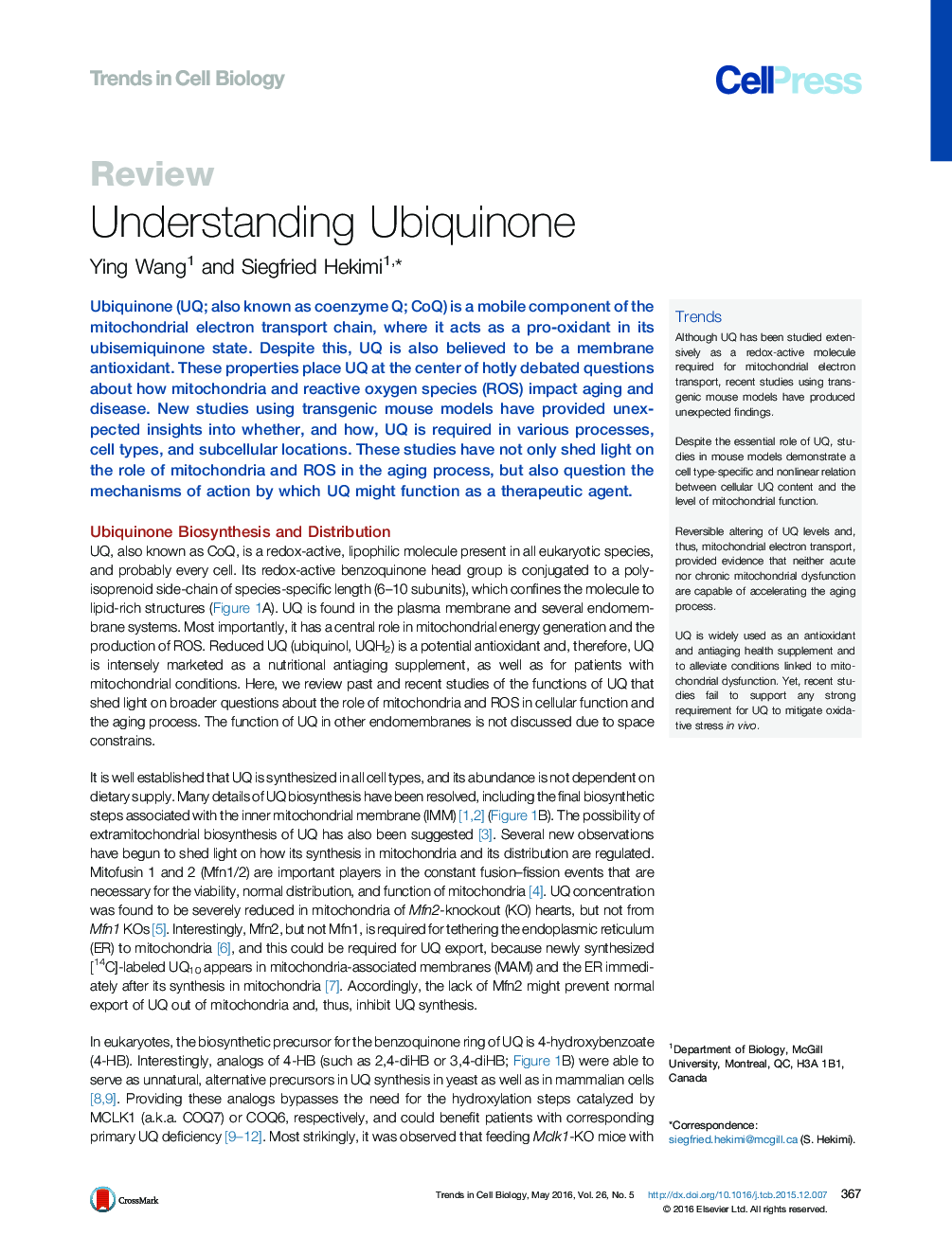| Article ID | Journal | Published Year | Pages | File Type |
|---|---|---|---|---|
| 2204245 | Trends in Cell Biology | 2016 | 12 Pages |
Ubiquinone (UQ; also known as coenzyme Q; CoQ) is a mobile component of the mitochondrial electron transport chain, where it acts as a pro-oxidant in its ubisemiquinone state. Despite this, UQ is also believed to be a membrane antioxidant. These properties place UQ at the center of hotly debated questions about how mitochondria and reactive oxygen species (ROS) impact aging and disease. New studies using transgenic mouse models have provided unexpected insights into whether, and how, UQ is required in various processes, cell types, and subcellular locations. These studies have not only shed light on the role of mitochondria and ROS in the aging process, but also question the mechanisms of action by which UQ might function as a therapeutic agent.
TrendsAlthough UQ has been studied extensively as a redox-active molecule required for mitochondrial electron transport, recent studies using transgenic mouse models have produced unexpected findings.Despite the essential role of UQ, studies in mouse models demonstrate a cell type-specific and nonlinear relation between cellular UQ content and the level of mitochondrial function.Reversible altering of UQ levels and, thus, mitochondrial electron transport, provided evidence that neither acute nor chronic mitochondrial dysfunction are capable of accelerating the aging process.UQ is widely used as an antioxidant and antiaging health supplement and to alleviate conditions linked to mitochondrial dysfunction. Yet, recent studies fail to support any strong requirement for UQ to mitigate oxidative stress in vivo.
